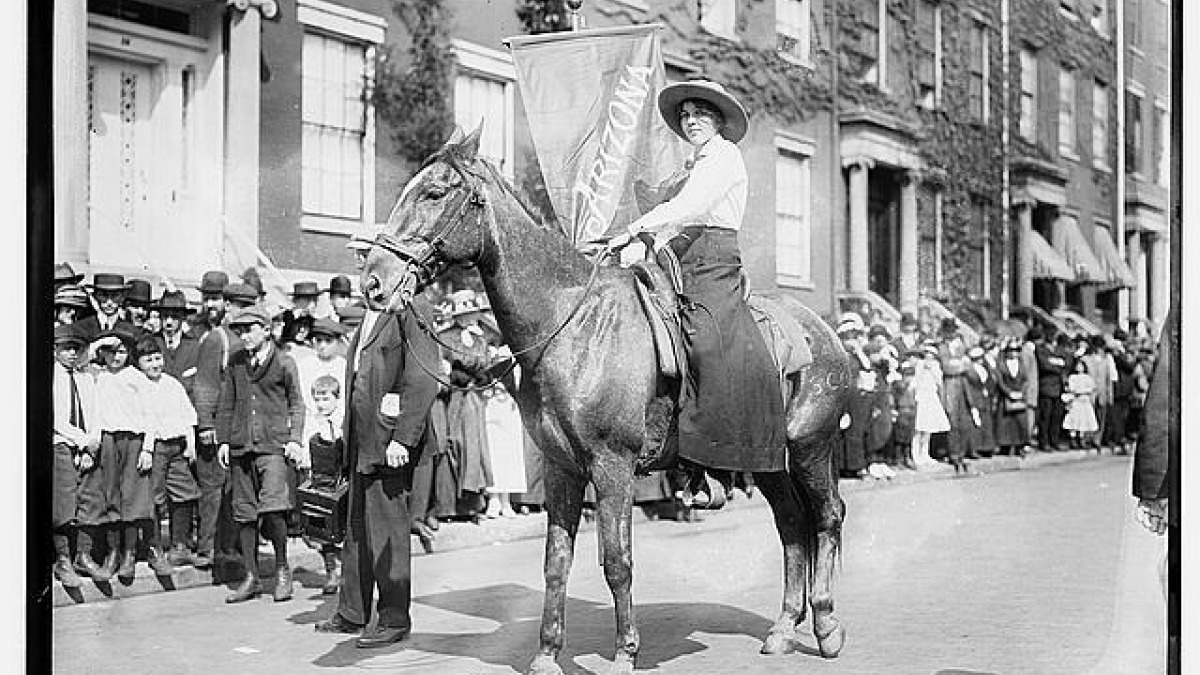'Women and Politics' to headline downtown lecture series

Despite Arizona's reputation as an ultra-conservative state, it was one of the first states to give women the power to vote and has historically supported them in roles of leadership, according to Heidi Osselaer, a faculty associate in the Department of History and author of “Winning Their Place: Arizona Women in Politics, 1883-1950,” who will kick off the fall 2012 Humanities Lecture Series at the Downtown Phoenix campus.
“The Humanities Lecture Series provides us with opportunities to analyze, discuss and interpret events. We look forward to public discussions that help us to understand and appreciate various points of view on political, social and cultural issues,” said Frederick C. Corey, director of ASU's School of Letters and Sciences and dean of University College.
Osselaer's lecture, "Women and Politics in Arizona," is scheduled to begin at 6:30 p.m., Sept. 6, at the Nursing and Health Innovation Building Two, 550 N. Third St., Innovation Auditorium, room 110. The lecture series is free and open to the public.
“When you read Arizona history, women in state politics are typically left out of the picture and history books are just now starting to tell the true story,” Osselaer said. “What I have found is that women have been a leading light and have played important roles in Arizona state level politics. From the time women have gained the right to vote in 1912 until the present, this has been a constant theme.”
That theme culminated in January 1999 when five women were sworn in as Arizona's top executive offices by Supreme Court Justice Sandra Day O' Connor. Dubbed the “Fab Five” by the media, these women made history when Arizona became the first state with all women in charge of government. But according to Osselaer, Arizona's female politicians have been making history since 1883, when they first demanded the right to vote.
Osselaer's lecture will focus on some of the state's most important early female politicians who were the “Fab Five” of their time. They include state suffrage leader Frances Willard Munds, state legislator Nellie Trent Bush, Congresswoman Isabella Greenway, Justice Lorna Lockwood and Madge Udall of Tucson, who rode a horse representing Arizona in the 1913 New York suffrage parade. These women established a tradition of holding office prior to 1950, which has allowed Arizona to become a leader in electing women to public office.
Osselaer believes most of this history has been lost because of Arizona's colorful past and that most women didn’t leave behind much documentation.
"Somehow we tend to think no women were here. I've found that women didn't have much time to record diaries, write letters or document their lives because they were too busy working,” Osselaer said. “Also, their children often were embarrassed that their mothers worked outside the home and ran for office during an age when most women stayed home, and therefore did not keep their papers for posterity."
Osselaer said many women during early statehood were abandoned, divorced, or widowed and came to Arizona to start over. Despite their circumstances, these women ran single-family households and built businesses, were teachers, and worked outside the home because of economic necessity.
“Many of these women witnessed and experienced discrimination early on and figured out they needed representation,” Osselaer said. “In 1912 Arizona passed the measure on women’s right to vote by 68 percent. They entered politics early on and became very astute and influential.”
For more information call Mirna Lattouf, lecture series organizer, at (602) 496-0638 or email her at Mirna.Lattouf@asu.edu.